Roque Nublo is an 80m-high volcanic rock situated at 1,813m in the Tejeda caldera, dominating the skyline in the centre of Gran Canaria. It’s one of the highest points on the island, and also looms large in the island’s culture, with songs and poems composed in its honour.
“It seems like a petrified storm, but a storm of fire, lava, rather than water,” writer Miguel de Unamuno wrote about it.
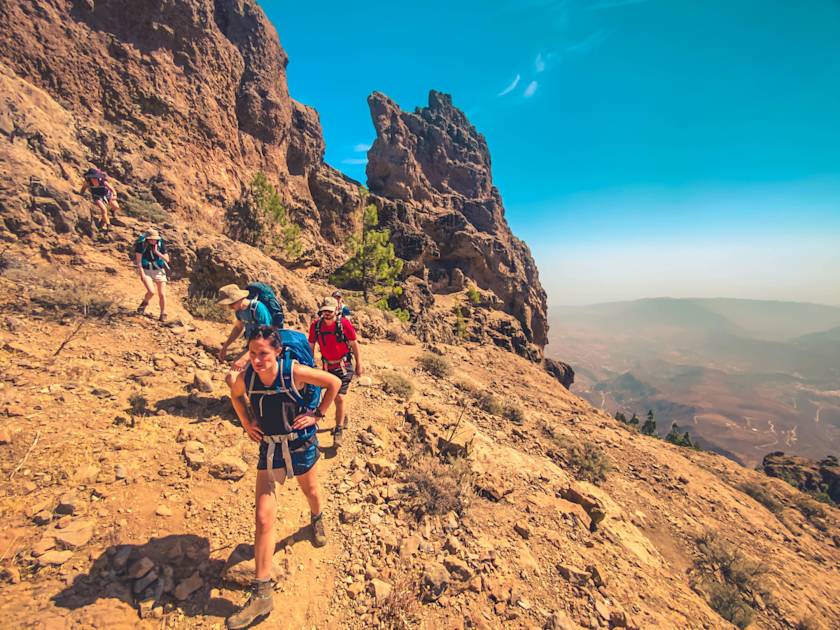
The description is accurate, as well as poetic. Roque Nublo is a volcanic plug - the hardened remains of lava within the vent of a volcano - the tangible reminder of a volcanic eruption which took place 15 million years ago.
When you eventually reach the top, it's like you're on the moon. You're looking down at a blanket of clouds.
‘Roque Nublo’ translates to ‘Cloudy Rock’, as it’s sometimes enveloped in clouds and mist.
“When you eventually reach the top, it's like you're on the moon,” says Rachael Hollwey, an outdoor adventure guide living in Gran Canaria. “You're looking down at a blanket of clouds. One time we had lunch up there and it was just white everywhere, just absolutely covered in white - that's quite an experience. Then the cloud moved over for a minute, showed us Roque Nublo and then covered it again.
“Of course, it’s not always like that. Last week it was crazy windy, so windy we wondered how Roque Nublo hadn’t blown over. Sometimes it's completely clear, and you can see a 360° of the island. Every single time it's completely different - I find that really magical and mystical.”
Rachael helped us create this guide, which features a day hike to Roque Nublo. It also delves into the myths that surround this fascinating monolith.
Please note that the route description is a short summary, designed to inspire but not to serve any navigational purpose - you’ll need to travel with a decent map, or an experienced local guide.
Where is Roque Nublo?
Roque Nublo is located on the Spanish island of Gran Canaria, which is part of the Canary Islands in the Atlantic Ocean. It is situated in the centre of the island, in the municipality of Tejeda. Roque Nublo is actually located within the Tejeda Caldera - an elliptical depression (measuring 10 by 12 miles) formed by a volcanic eruption.
Roque Nublo is also part of the UNESCO-designated area Risco Caido and the Sacred Mountains of Gran Canaria, which includes volcanic rock formations, ancient cave dwellings and another important monolith, Roque Bentayga.
Hiking Roque Nublo
Most guides to Roque Nublo will describe the shortest hiking route to get there - a signposted trail beginning opposite the Aparcamiento de la Degollada de La Goleta, a small car park off the GC-600 road. This trail is 2.3 miles (3.75km) out and back, so a round trip will take around 90 minutes if you include some time to enjoy the view. However, Rachael has a longer route suggestion for those who would prefer a more challenging hike, that begins and ends in Cruz de Tejeda.
The Cruz de Tejeda to Roque Nublo Circuit Hike
- Distance: 11.8 miles (19km)
- Hiking time: 7 hours
- Ascent: 700m up/ 300m down
This Roque Nublo hike begins in Cruz de Tejeda, a village which used to be a crossroads where people waited for transport. The first part of the hike takes you down a dirt trail and quiet roads to the village of Tejeda (an alternate start point featured on the map), where Rachael recommends a stop at Dulceria Nublo.
“It’s a local bakery selling almond products - Tejeda is famous for almonds,” she says. “There's an almond festival in March - thousands go to it and have a party because the almond trees have blossomed. This Bakery is huge; an endless counter full of these almond products. But there's a reason we take everyone down there, because they need a lot of sugar and a lot of fuel for the upcoming hike.”

After the bakery you’ll walk to Tejeda’s most well-known viewpoint, Plaza Mirador del Ayuntamiento, where you’ll look out over the Tejeda Caldera - Roque Nublo will be visible in the background, jutting out towards the sky. After that you’ll start hiking along a trail that winds through the volcanic rock formations.
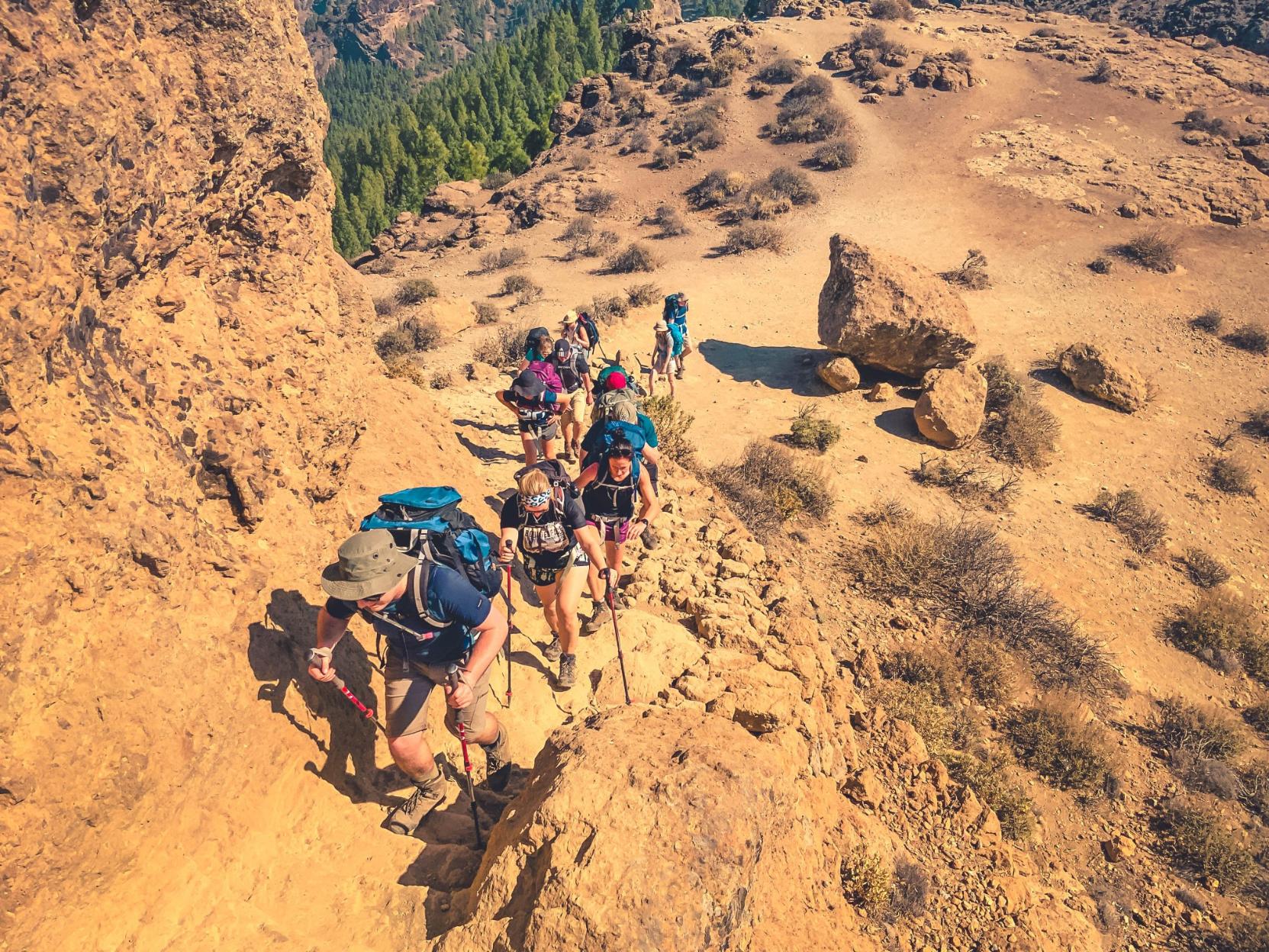
“It's about three hours - depending on the group - of hiking uphill through the rock,” Rebecca says. “The weather has an impact on how tough that is as well; the heat makes it difficult. Along the way you’ll see some small cave houses hewn into the rock. They aren't for tourism - people are living there.
“After about three or four hours you’ll reach a dense pine forest on your left, and to your right you have Roque Bentayga. You can look back down where you've walked from which is quite nice to see as well, and you can look across to see Pico de las Nieves which is the highest point of the island.”
The path levels out and takes you through the pine forest, and back out onto the rock.
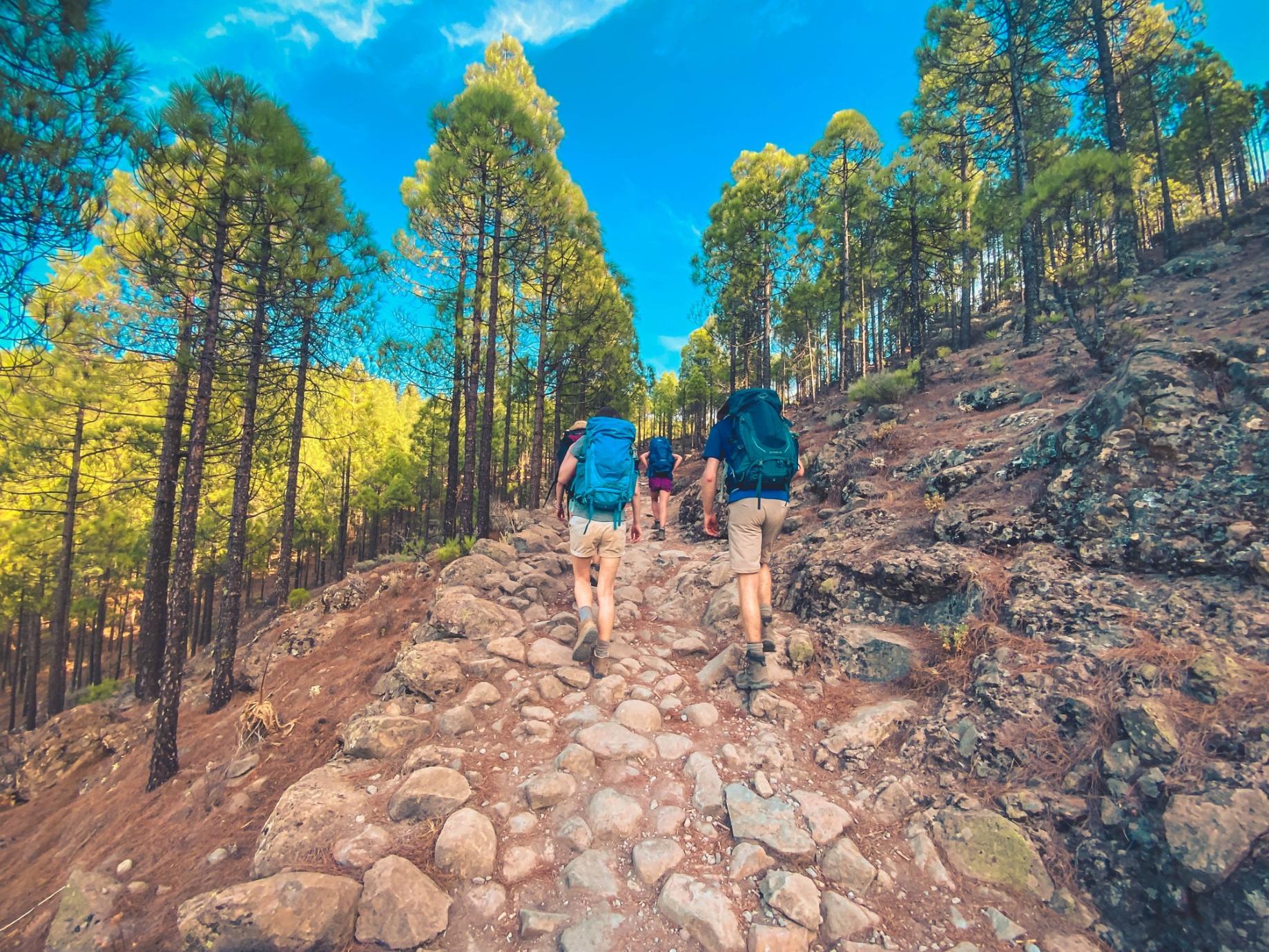
“After the pine forest you start seeing Roque Nublo. You can see it from quite low down and it looks so far away, like you have to climb so high to reach it. But then, out of nowhere it’s suddenly on your left. Every angle that you see it from, you see different rock formations alongside it. It looks like there's a frog looking up at Roque Nublo from ground level, then from another angle you have a monk praying - that rock is called The Friar.”
You’ll continue to enjoy panoramic views of the caldera as you reach the final incline. At the top is the rocky plateau where you’ll see Roque Nublo. It’s worth taking a moment to enjoy the view - Rachael recommends stopping there for lunch.
Then it’s time to head back to Tejeda. You can retrace your steps for an out and back hike, or take a different route through the La Culata Tejeda hiking area, where you’ll past unspoilt Canarian villages and cave houses.
Roque Nublo: An Ancient Enigma
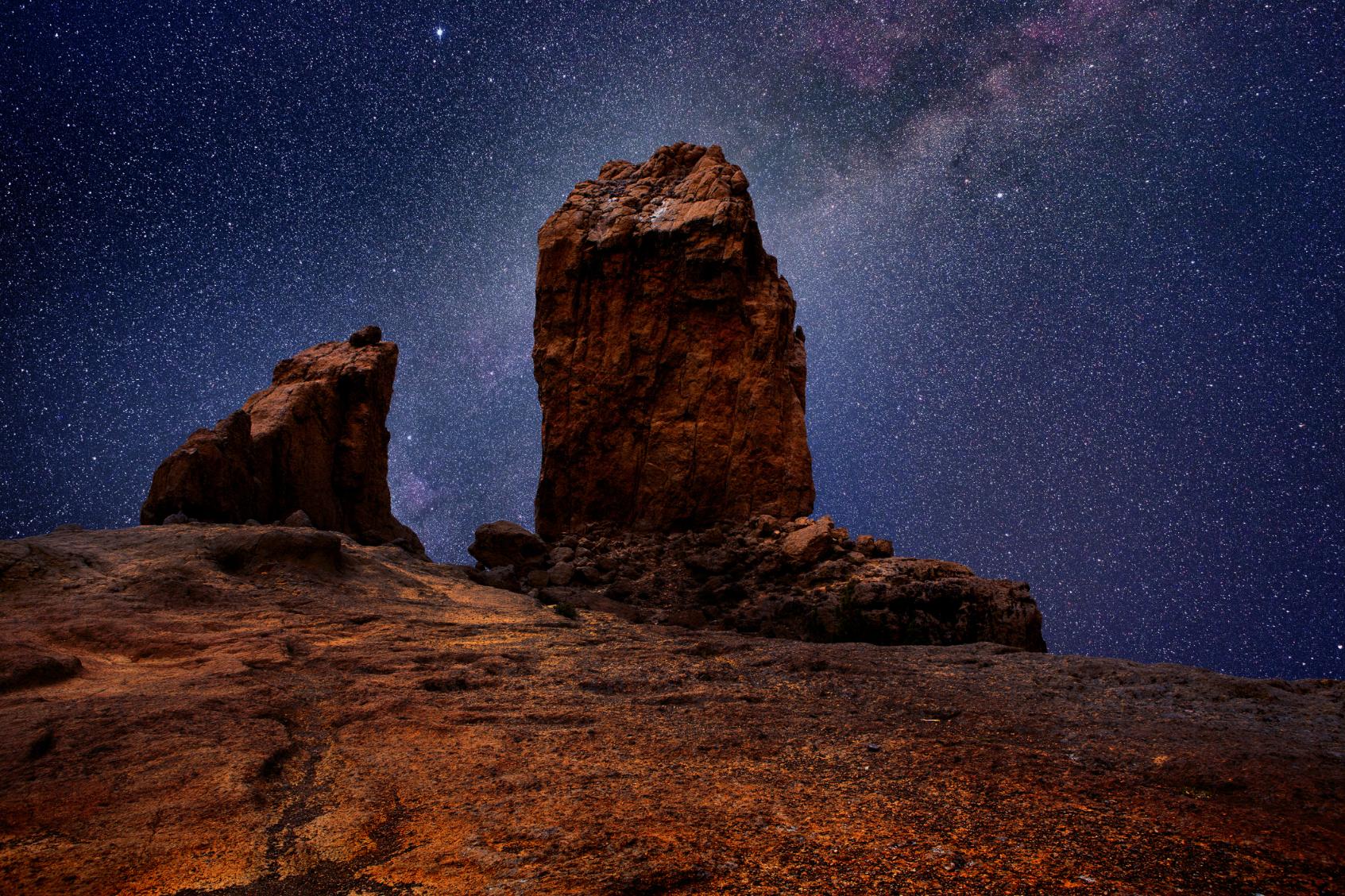
The history of Roque Nublo, and Gran Canaria as a whole, is shrouded in mystery. The island’s indigenous inhabitants were known as Guanches, believed to have arrived on the Canary Islands from Africa between the first and second century BC, long before the Spanish settlers in the 15th century. They made their homes in caves and ravines, growing crops in agricultural terraces. The Risco Caido architectural complex - 19 miles (26km) from Roque Nublo - is one of the most complete pre-Hispanic settlements on Gran Canaria, featuring caves used as dwellings, storehouses and temples with fertility symbols carved into the rocks.
It's a very mysterious rock - there's always that on top of the world, moon-like feeling when you visit as well. Do we have to understand everything?
Across Gran Canaria are several pre-Hispanic ‘almogarenes’, sacred meeting places for rites and festivities, which are also used as sophisticated calendars. Roque Bentayga - a rock formation located roughly three miles (5km) northwest of Roque Nublo as the crow flies - has an almogaren where it’s possible to keep track of the equinox by the pattern of light and shadow reflected on the rock wall. According to this study, the Roque Bentayga almogaren is also astrologically aligned with Roque Nublo.
“We believe that the selection of the place of the almogaren of Roque Bentayga was conditioned by the striking hierophany of the moon rising behind Roque Nublo, the most conspicuous feature of the horizon, at the southern major lunar standstill,” it says.
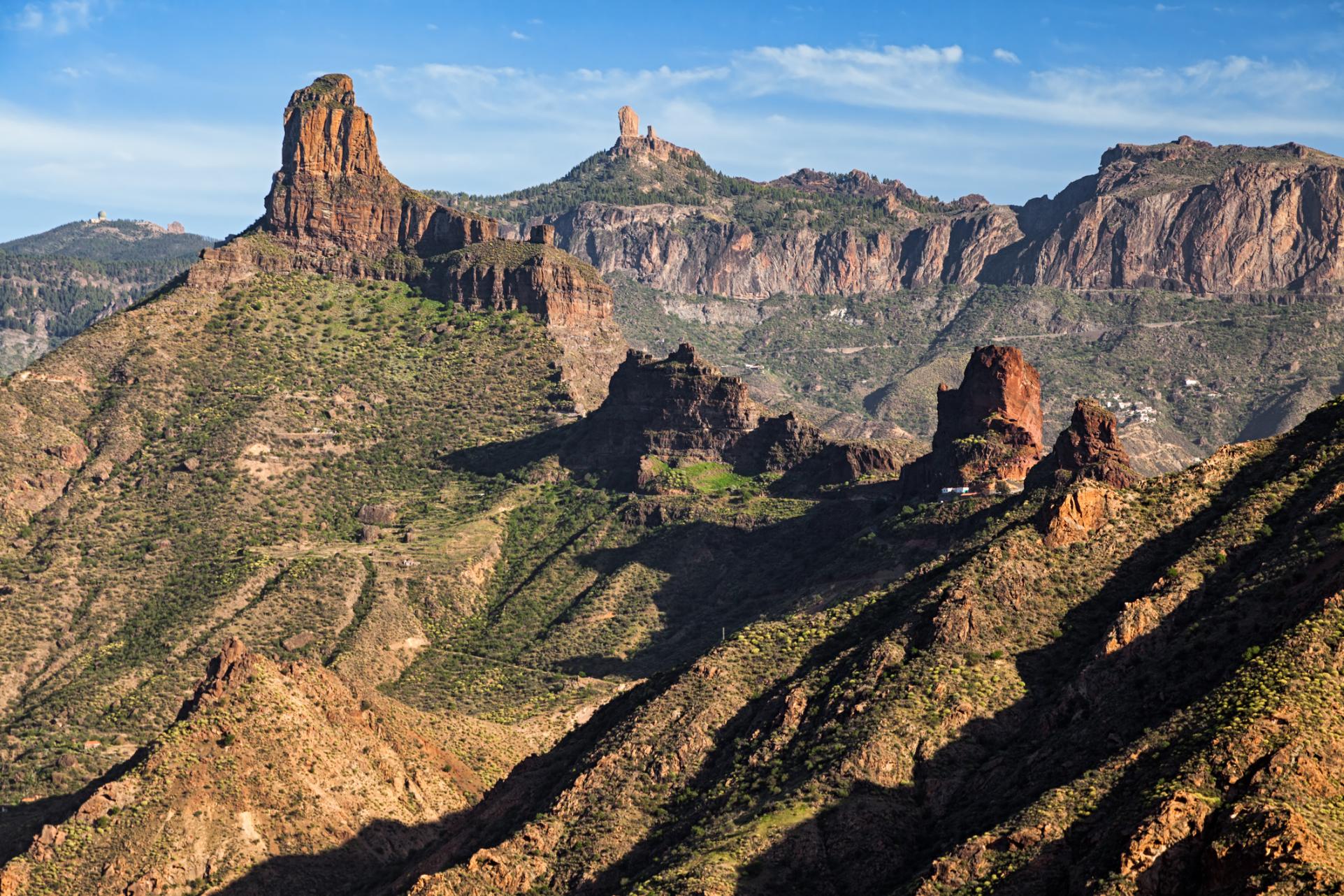
Because of this, it’s believed that Roque Nublo would have been a place where the Guanches gathered to worship their celestial God, Acorán. But there’s scant archaeological evidence about the form these rituals would have taken - etchings of pubic triangles on cave walls, human and animal bones indicative of sacrifice - and none of it was found at Roque Nublo.
“Everything is speculation and nothing's actually 100%,” Rachael says. “I do quite like that about it - of course you want to know, but it’s also quite nice that you don't know for certain.
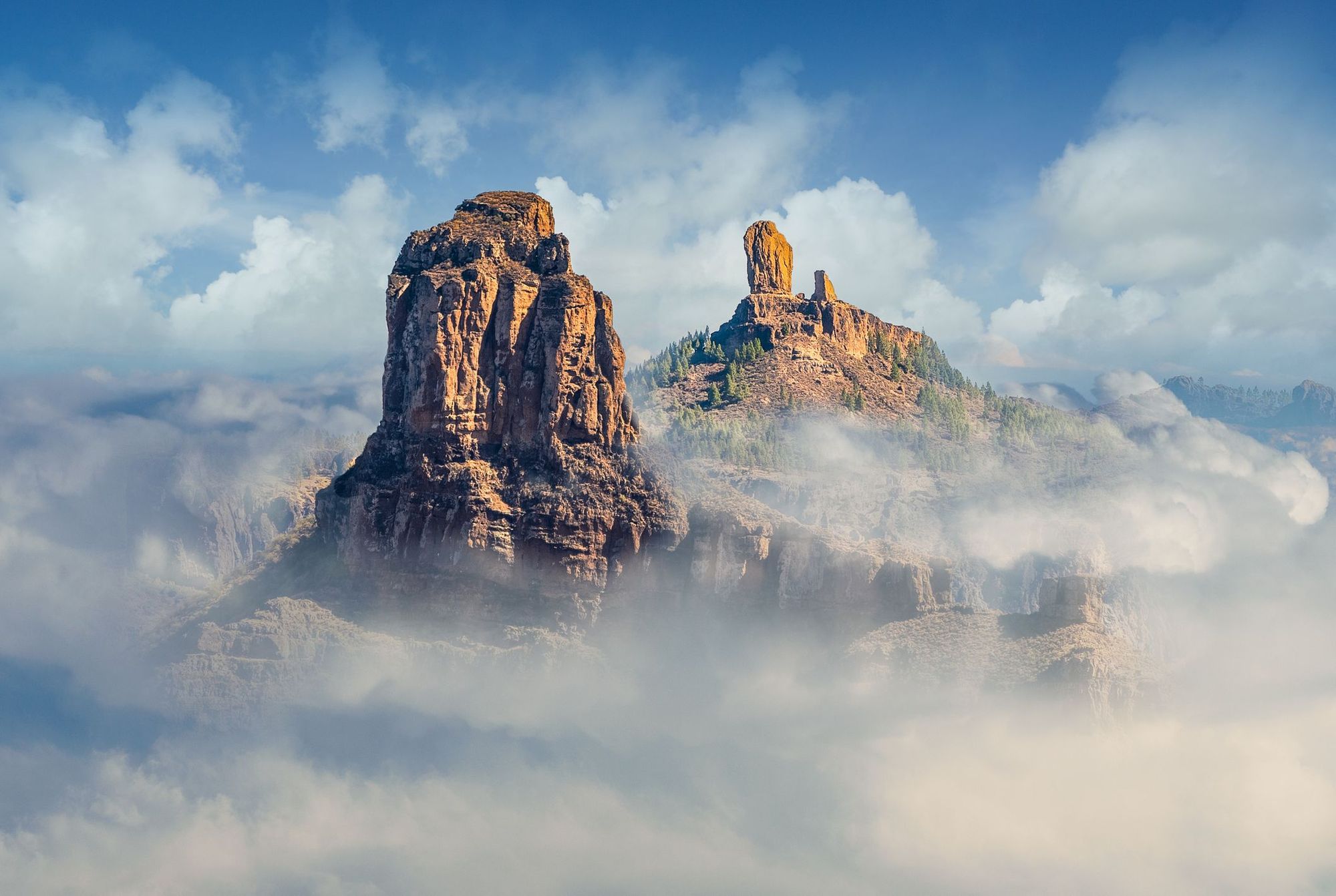
“It's a very mysterious rock - there's always that on top of the world, moon-like feeling when you visit as well. Do we have to understand everything?”
What to Pack for a Roque Nublo Hike
Gran Canaria might be known as a winter sun destination, but it can get cold and windy in the highlands. If you’re travelling between December and February we recommend bringing thermals (preferably merino). This is your year-round kit list:
- Waterproof jacket
- Breathable wicking layers
- Fleece
- Buff or neck scarf
- Lightweight trousers or shorts
- Sunglasses
- Sunhat
- Suncream
- 2 x 1 litre reusable water bottle
- Broken-in hiking boots.
How to Get to Roque Nublo
Roque Nublo is accessible by road. The closest car park is the Aparcamiento de la Degollada de La Goleta, located off the GC-600 road 26 miles (42km) from the capital Las Palmas de Gran Canaria - around a 60 minute drive. Cruz de Tejeda, where the hike starts, is also accessible by car and equidistant to Roque Nublo from Las Palmas.
You can also access both Roque Nublo and Tejeda on the Line 18 bus from Maspalomas in the south of the island (ask to stop at La Goleta). Public transport from La Palmas de Gran Canaria is also possible, but requires more changes. You’ll need to take the 303 bus from San Telmo bus station to San Mateo. From here, take the 305 bus to Tejeda. To continue to Roque Nublo, take the number 18 bus from Tejeda to La Goleta.
On private group trips and hikes to Roque Nublo, transportation will be arranged for you.
Inspired? Check out our Hike the Volcanic Island of Gran Canaria adventure, taking you to Roque Nublo and beyond!




